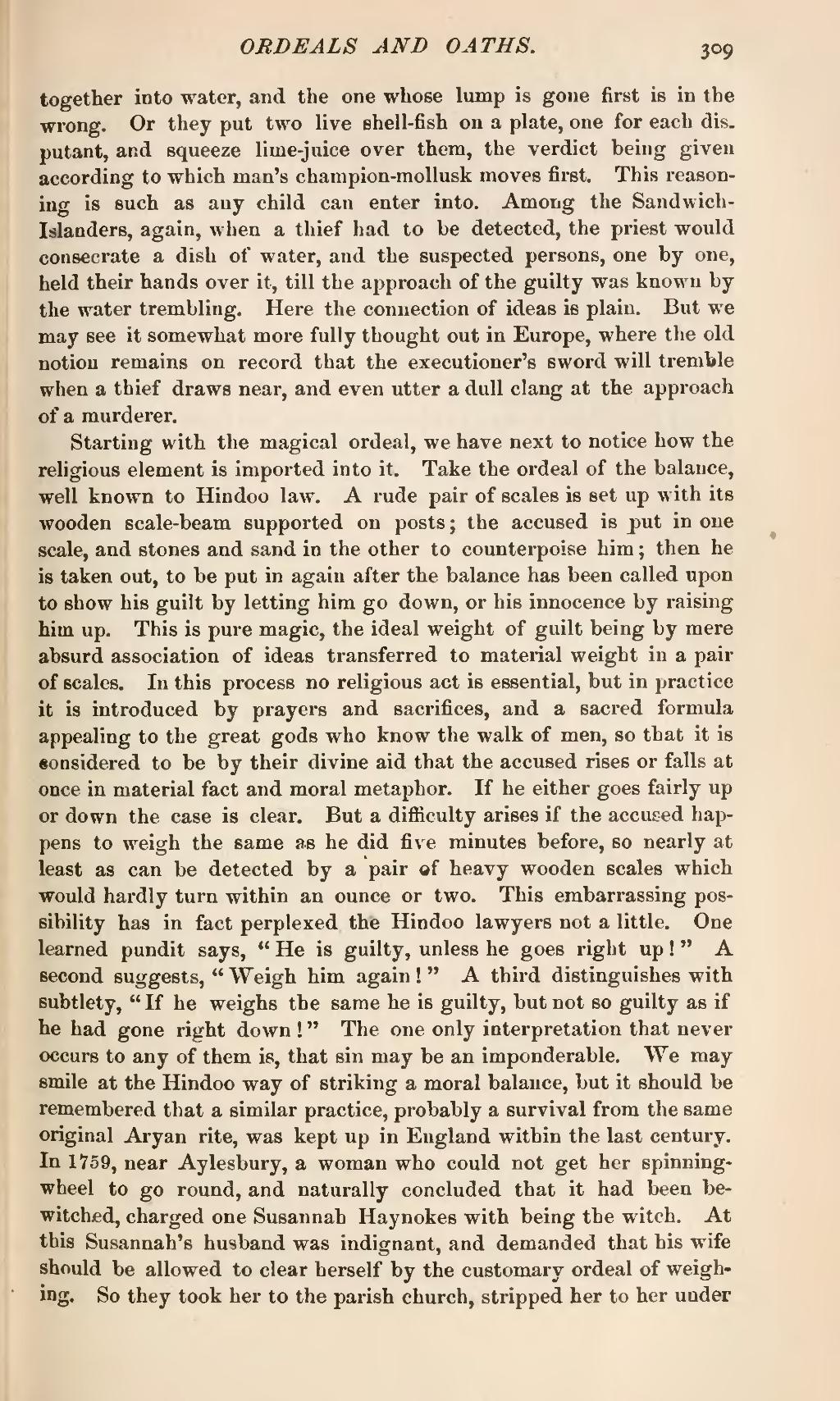together into water, and the one whose lump is gone first is in the wrong. Or they put two live shell-fish on a plate, one for each disputant, and squeeze lime-juice over them, the verdict being given according to which man's champion-mollusk moves first. This reasoning is such as any child can enter into. Among the Sandwich-Islanders, again, when a thief had to be detected, the priest would consecrate a dish of water, and the suspected persons, one by one, held their hands over it, till the approach of the guilty was known by the water trembling. Here the connection of ideas is plain. But we may see it somewhat more fully thought out in Europe, where the old notion remains on record that the executioner's sword will tremble when a thief draws near, and even utter a dull clang at the approach of a murderer.
Starting with the magical ordeal, we have next to notice how the religious element is imported into it. Take the ordeal of the balance, well known to Hindoo law. A rude pair of scales is set up with its wooden scale-beam supported on posts; the accused is put in one scale, and stones and sand in the other to counterpoise him; then he is taken out, to be put in again after the balance has been called upon to show his guilt by letting him go down, or his innocence by raising him up. This is pure magic, the ideal weight of guilt being by mere absurd association of ideas transferred to material weight in a pair of scales. In this process no religious act is essential, but in practice it is introduced by prayers and sacrifices, and a sacred formula appealing to the great gods who know the walk of men, so that it is considered to be by their divine aid that the accused rises or falls at once in material fact and moral metaphor. If he either goes fairly up or down the case is clear. But a difficulty arises if the accused happens to weigh the same as he did five minutes before, so nearly at least as can be detected by a pair of heavy wooden scales which would hardly turn within an ounce or two. This embarrassing possibility has in fact perplexed the Hindoo lawyers not a little. One learned pundit says, "He is guilty, unless he goes right up!" A second suggests, "Weigh him again!" A third distinguishes with subtlety, "If he weighs the same he is guilty, but not so guilty as if he had gone right down!" The one only interpretation that never occurs to any of them is, that sin may be an imponderable. We may smile at the Hindoo way of striking a moral balance, but it should be remembered that a similar practice, probably a survival from the same original Aryan rite, was kept up in England within the last century. In 1759, near Aylesbury, a woman who could not get her spinning-wheel to go round, and naturally concluded that it had been bewitched, charged one Susannah Haynokes with being the witch. At this Susannah's husband was indignant, and demanded that his wife should be allowed to clear herself by the customary ordeal of weighing. So they took her to the parish church, stripped her to her under

